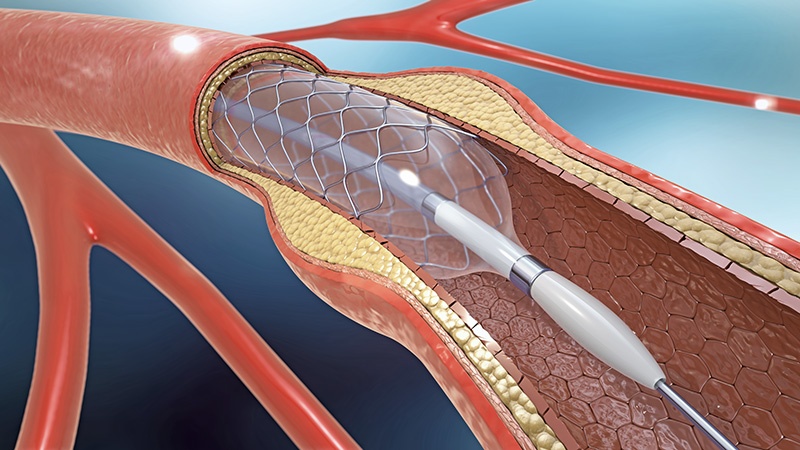
What Is It?
Percutaneous Coronary Intervention (Angioplasty & Stent) is the opening of a narrowed coronary (heart) artery usually done by passing a deflated balloon through the narrowed region of the artery then blowing it up to push the narrowing back into the wall of the artery. Usually a stent (a metal tube) is then placed in the treated area to help keep the artery open.
How Is It Done?
It is done by passing a catheter (tube), with a balloon at the tip, over a wire through the artery to the area of the blockage. The balloon is then inflated by pumping X-ray contrast under pressure through the tube to the balloon. A stent is placed in an artery by putting it on the deflated balloon and then by inflating the balloon, this expands the stent. The stent stays in the artery while the balloon is deflated and removed.
Why Is It Done?
It is done to open a narrowed or blocked heart artery so that normal blood flow can reach the heart muscle and allow it to work normally.
This is a minimally invasive method of dealing with heart artery disease. Patients usually recover rapidly from the procedure and can resume most normal activities in a few days.